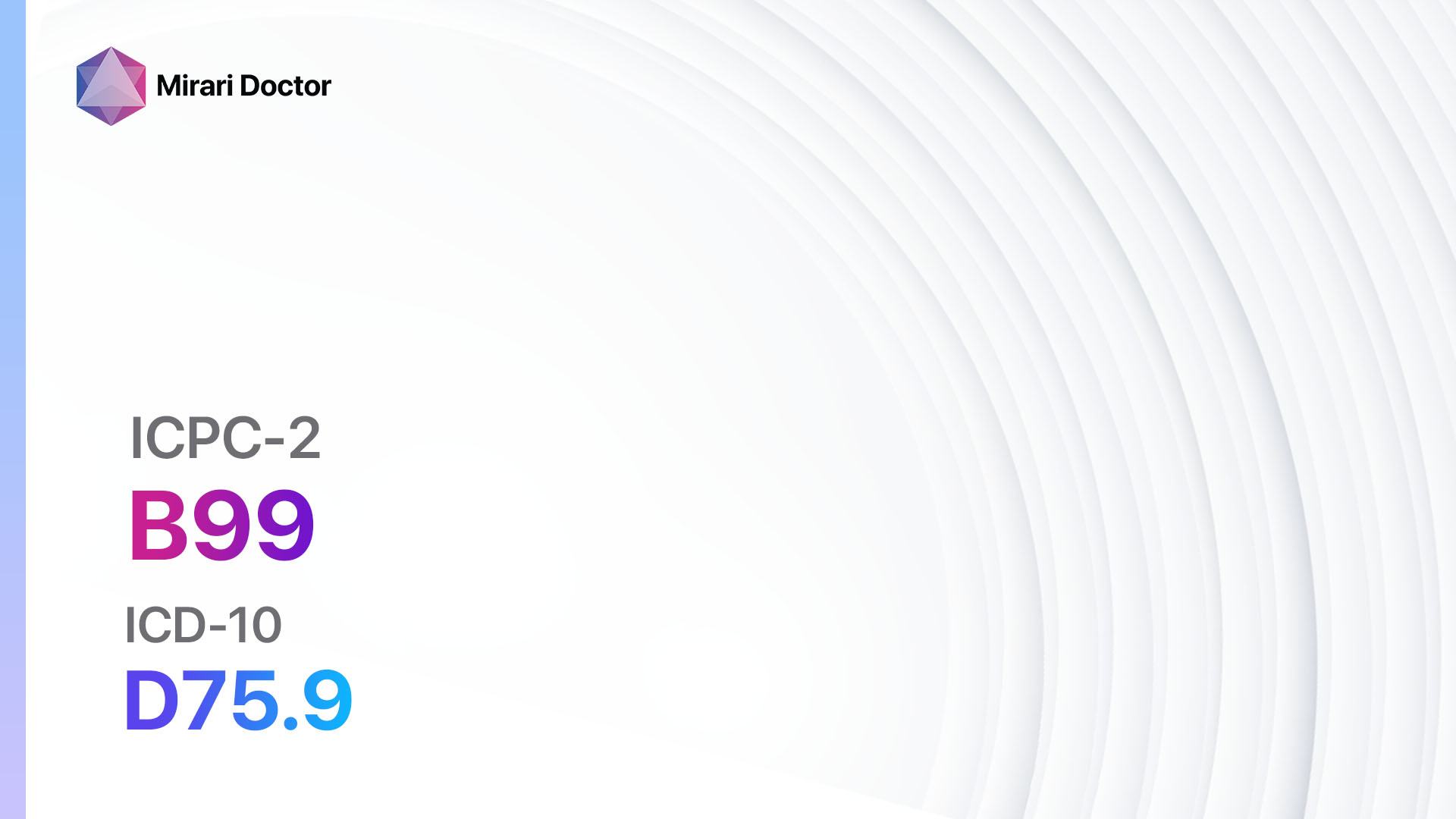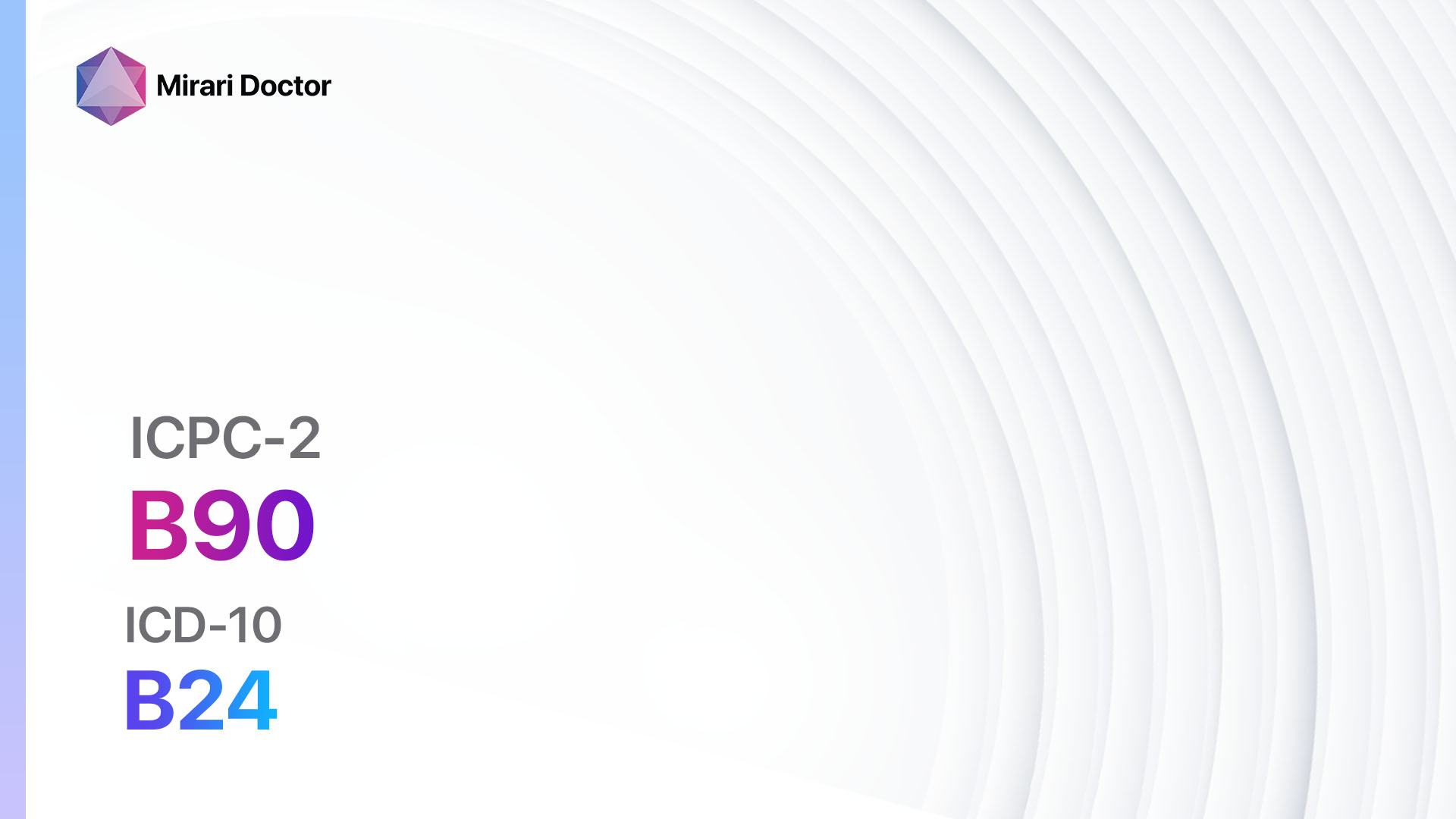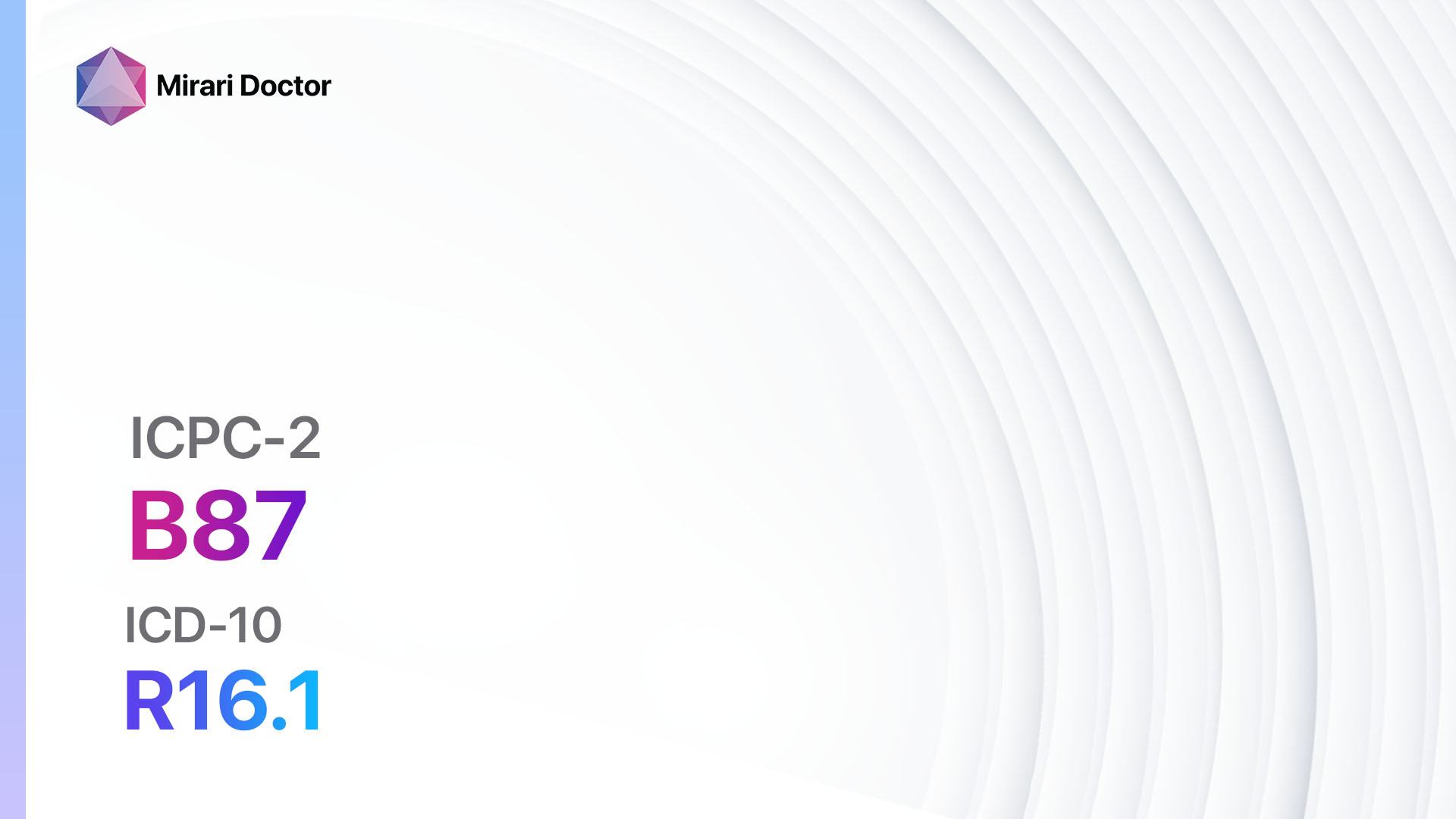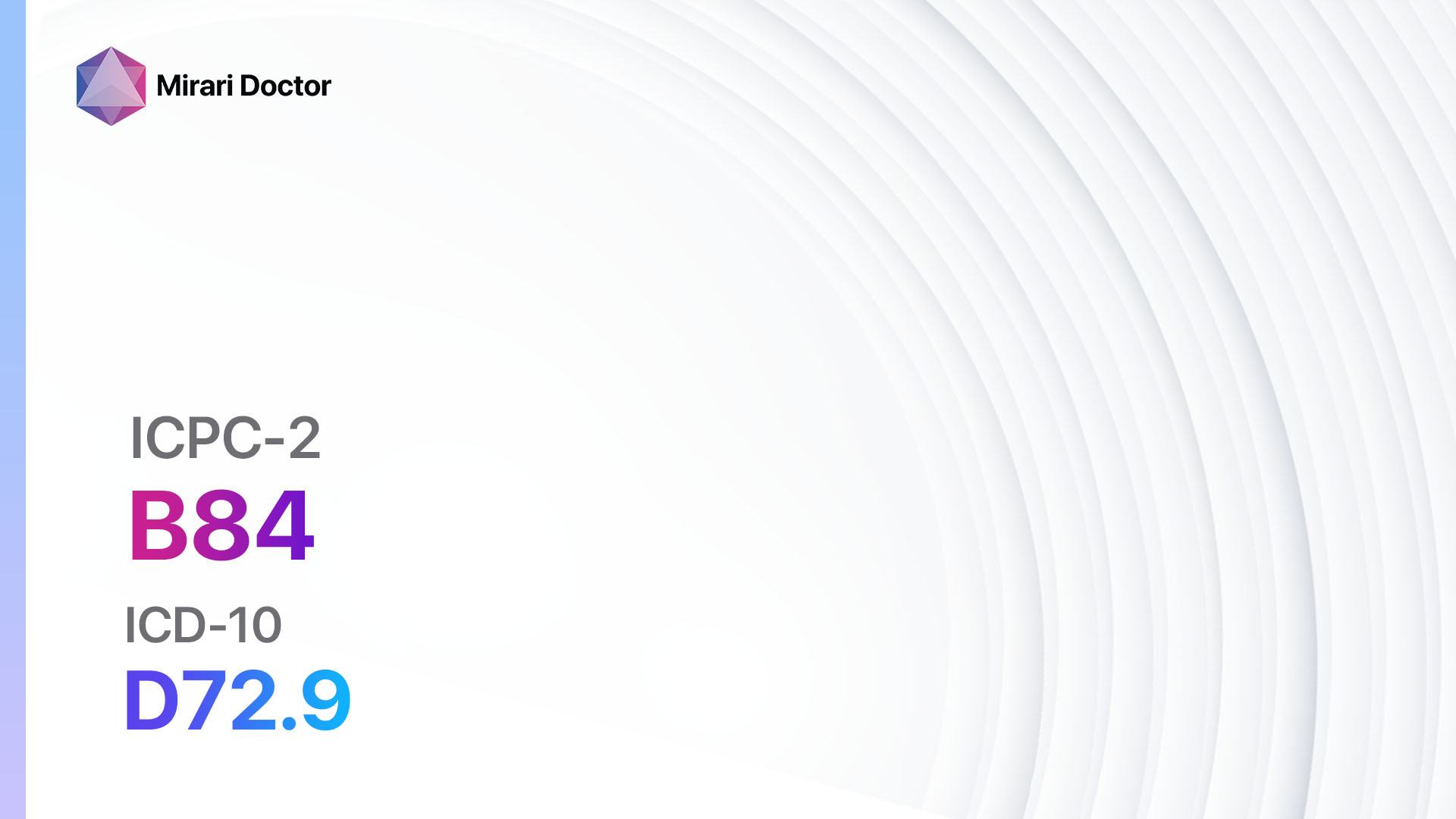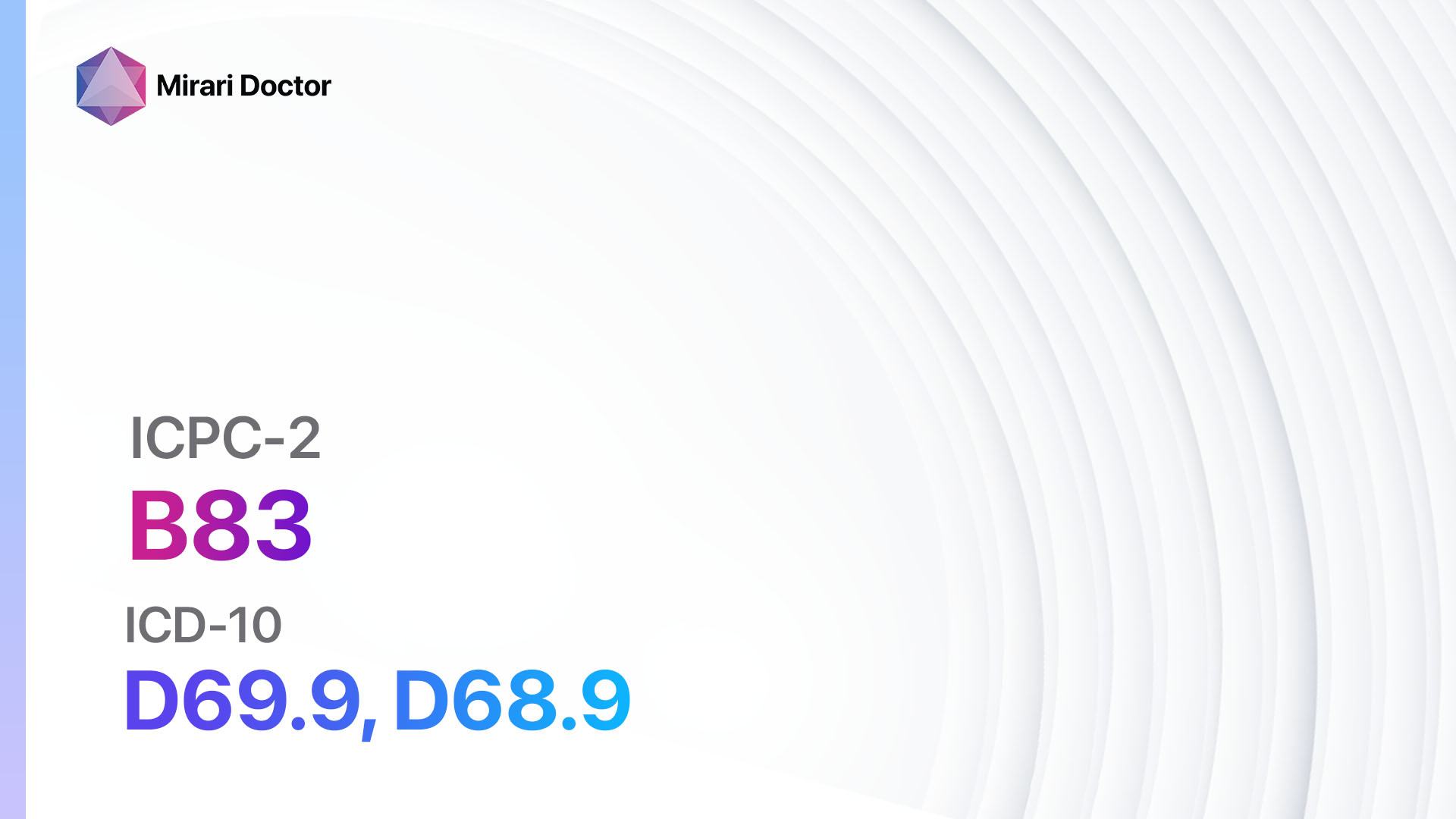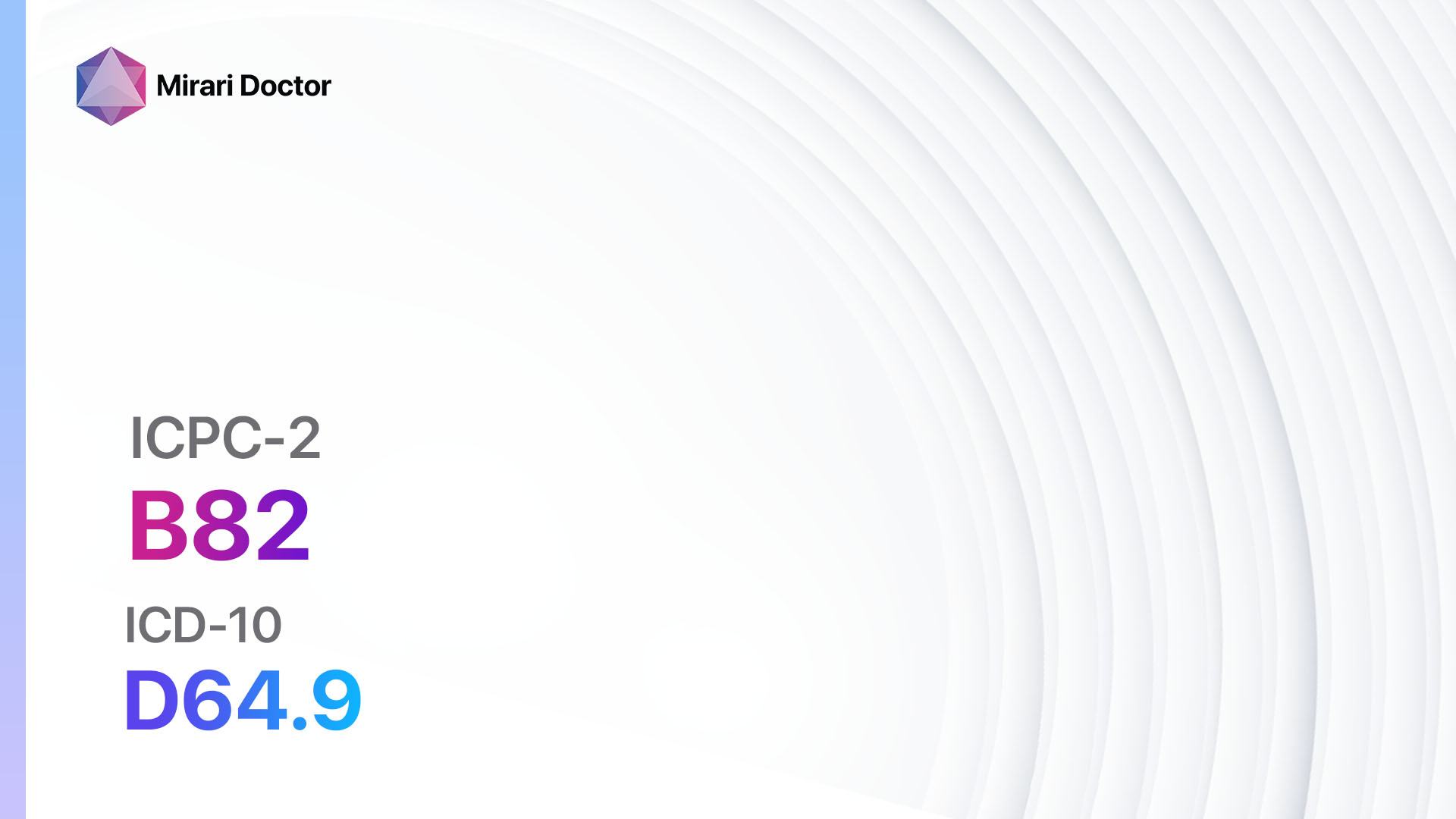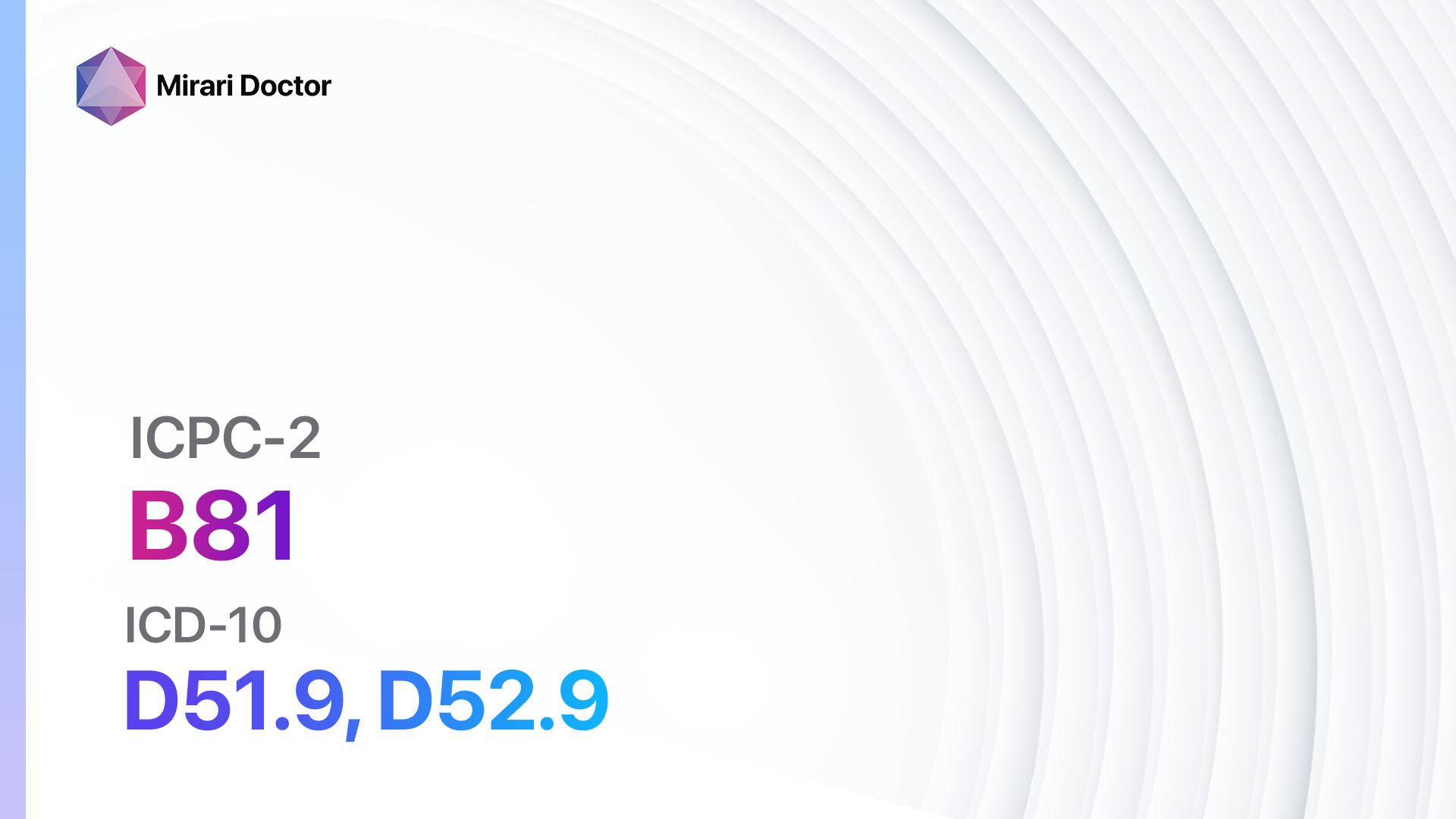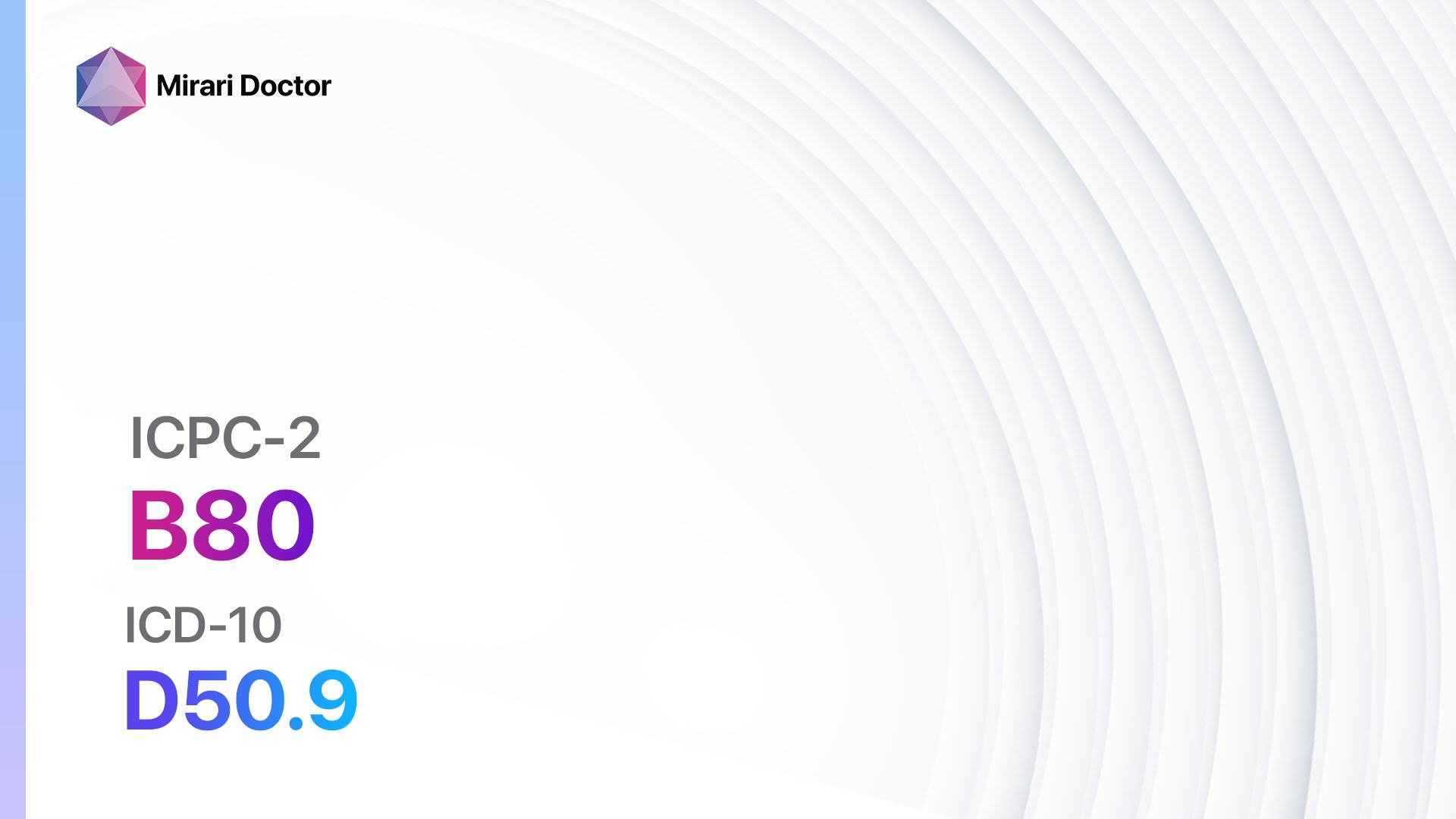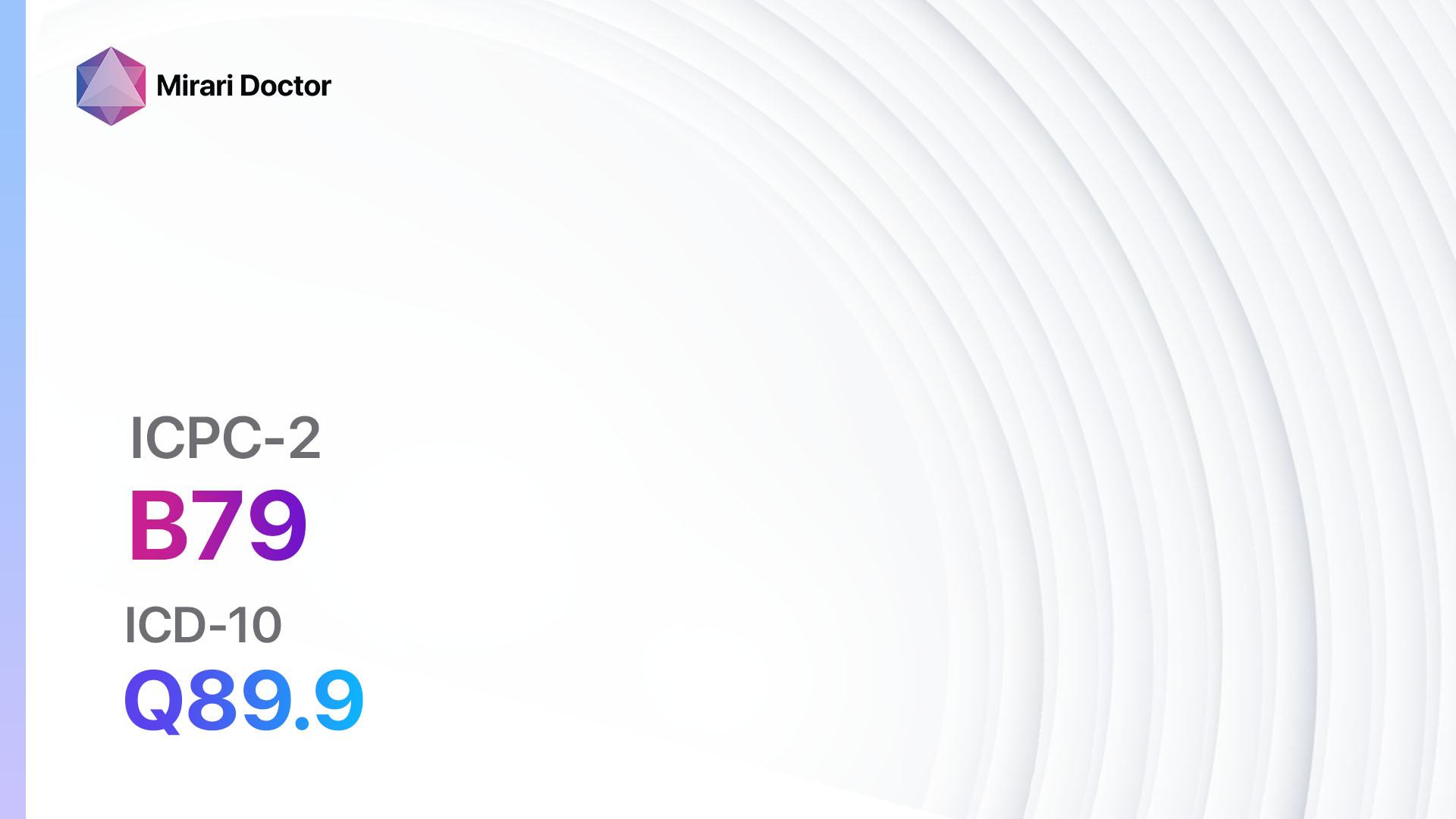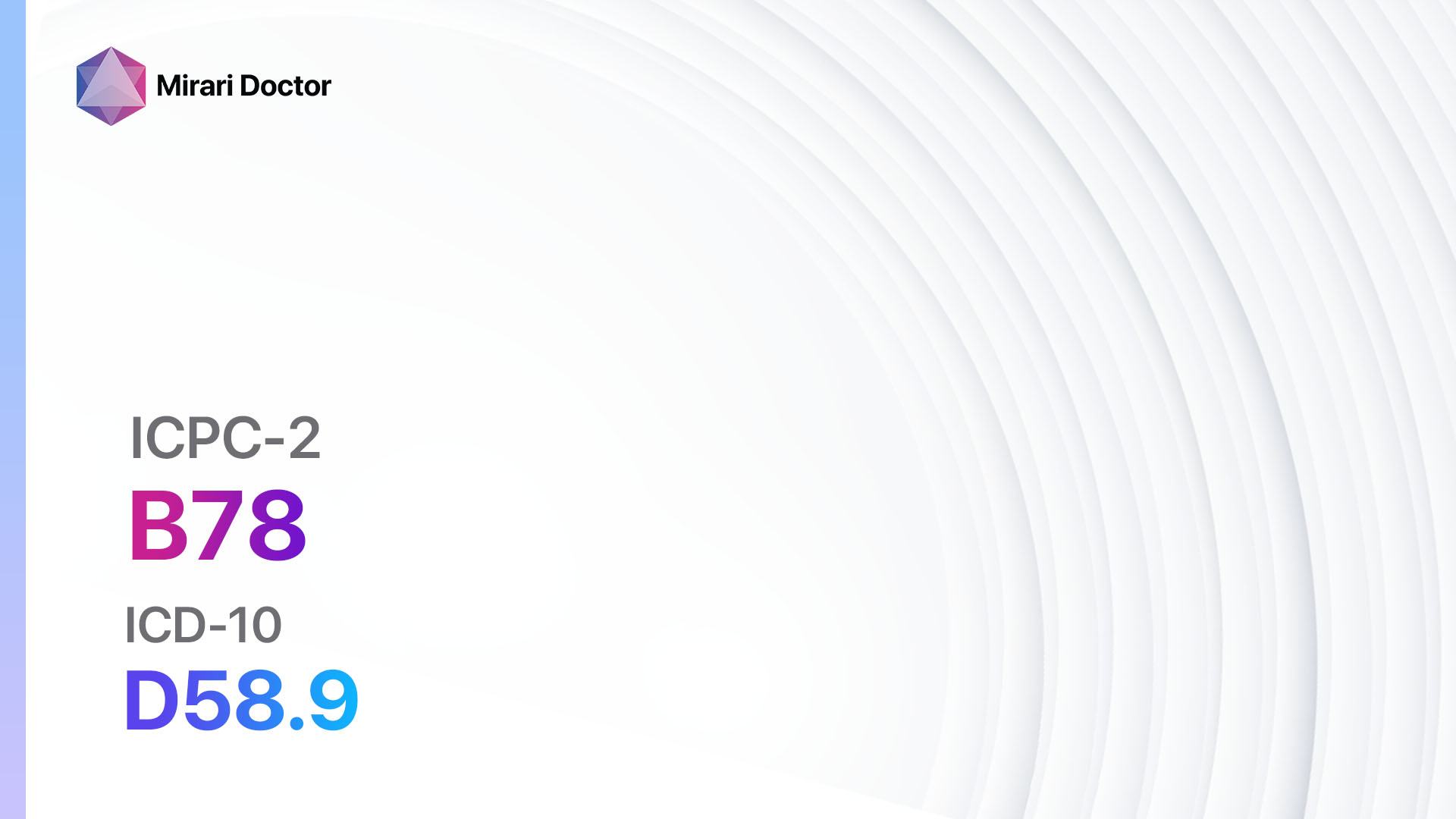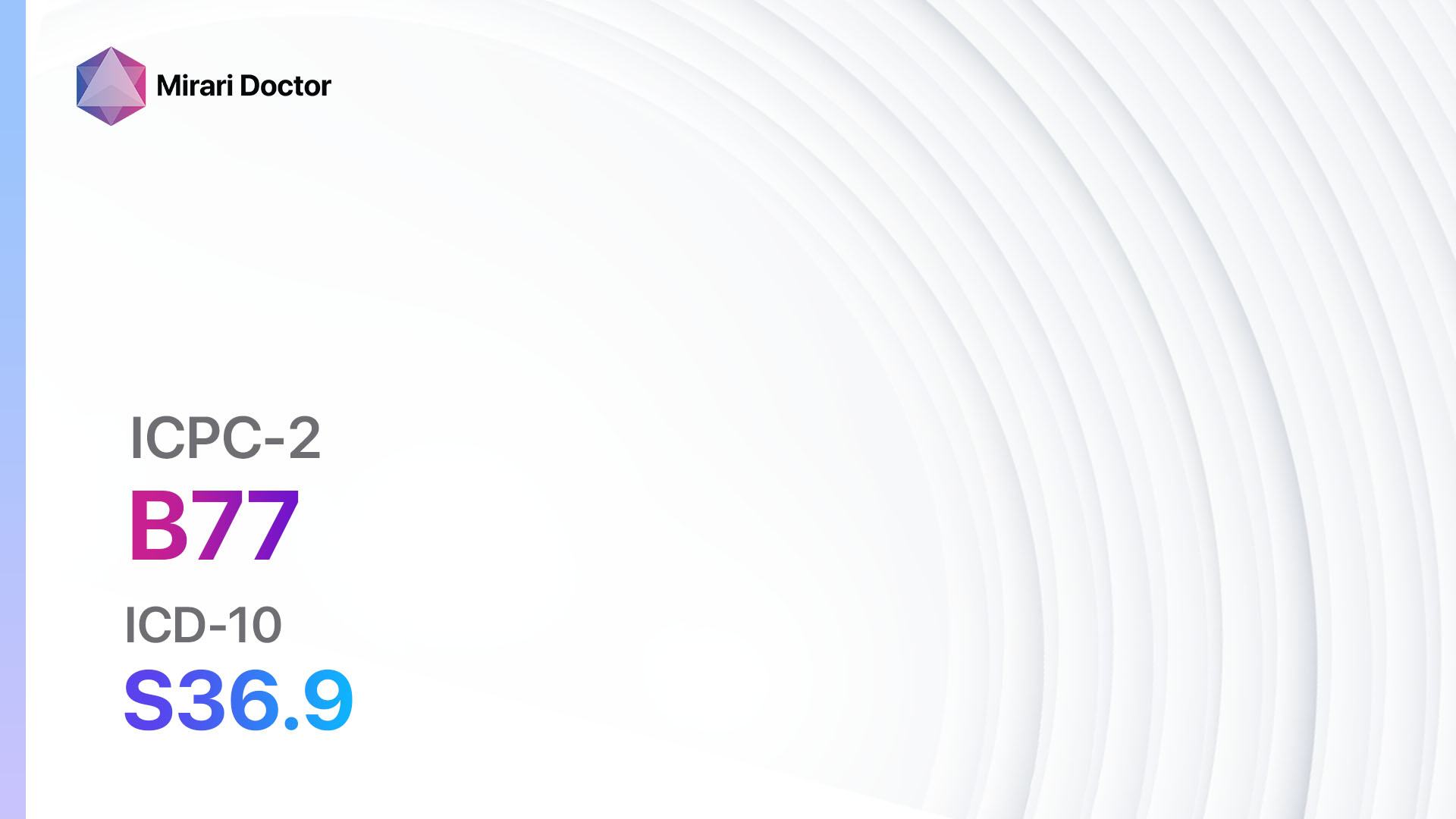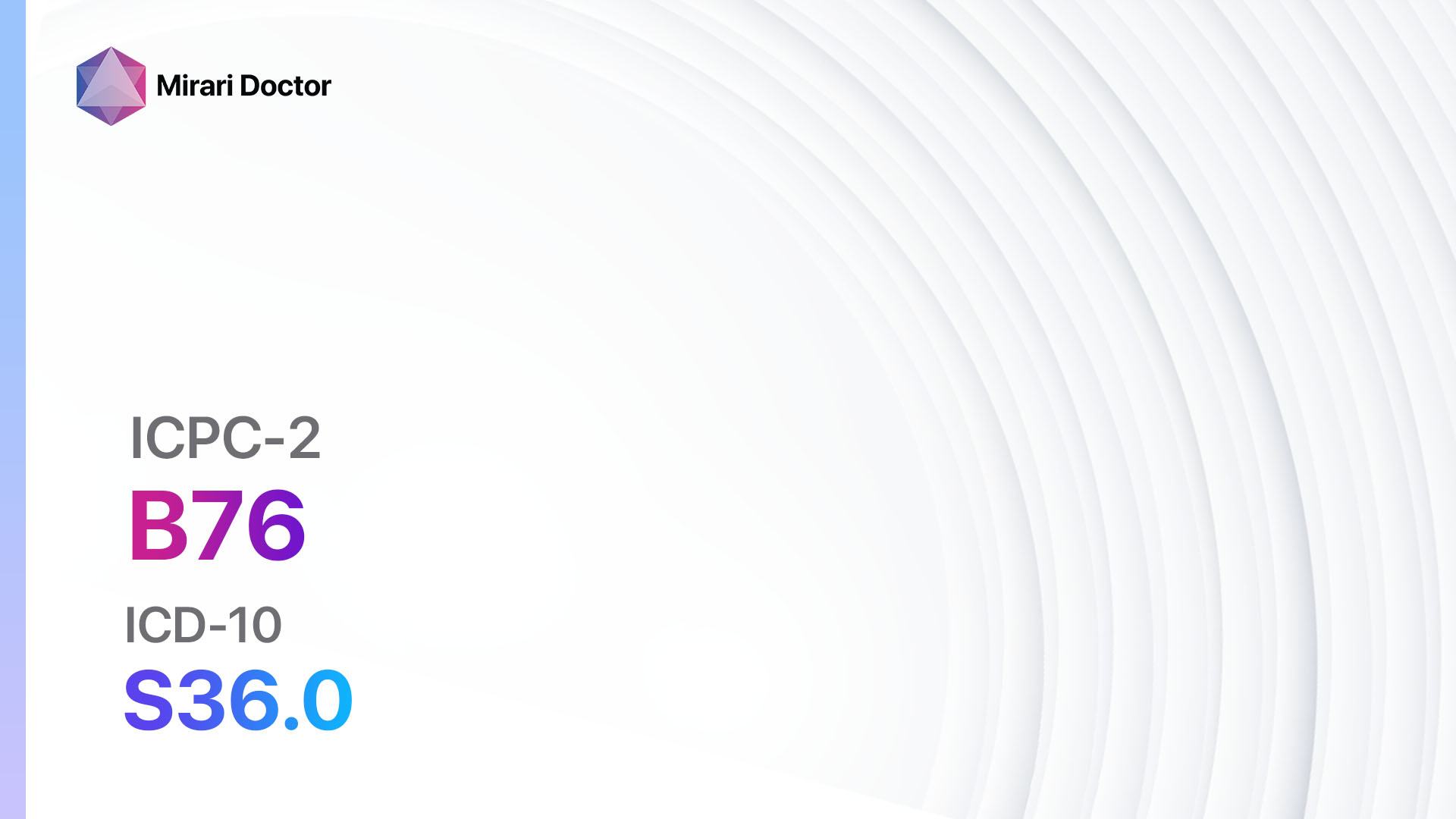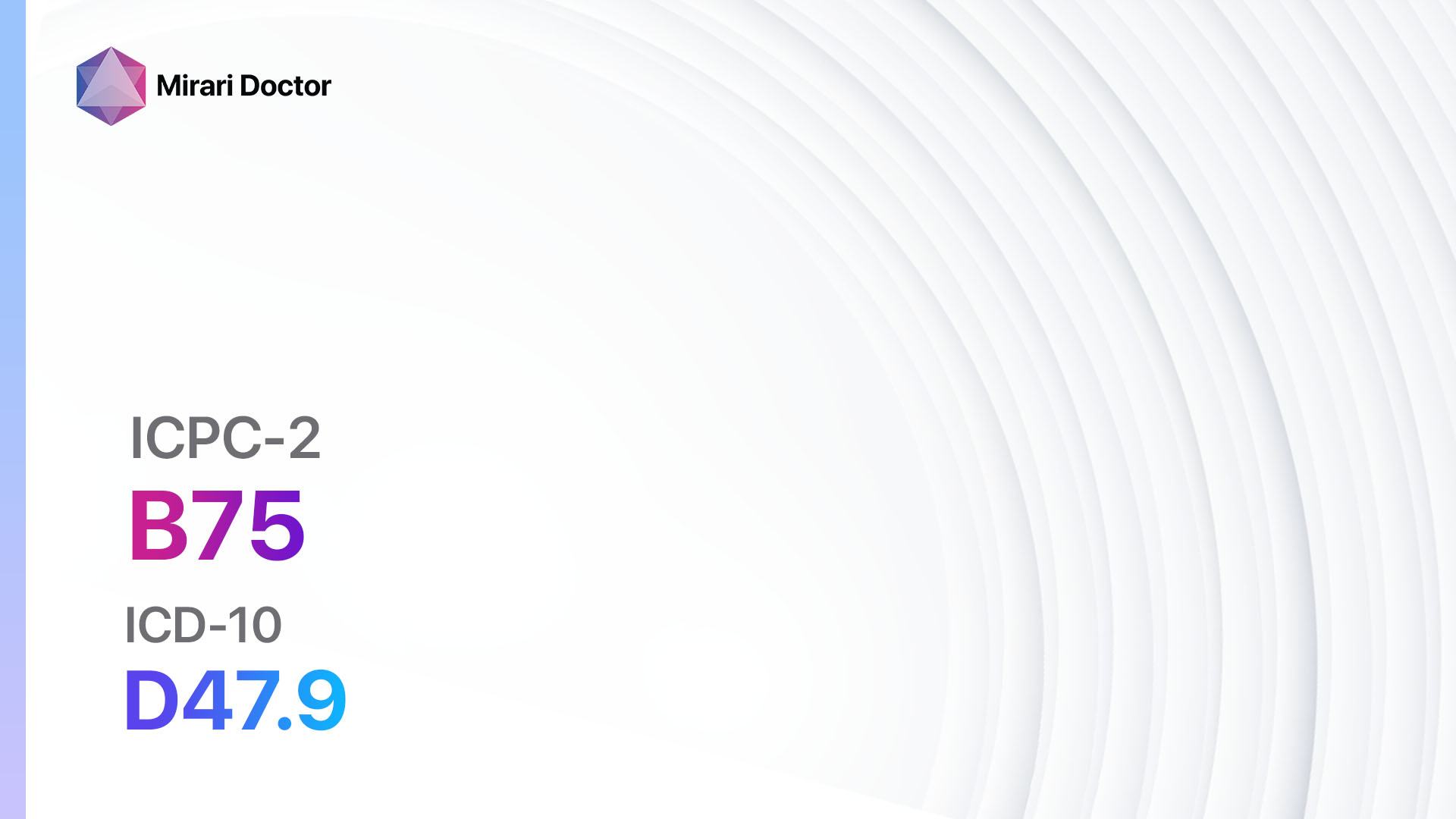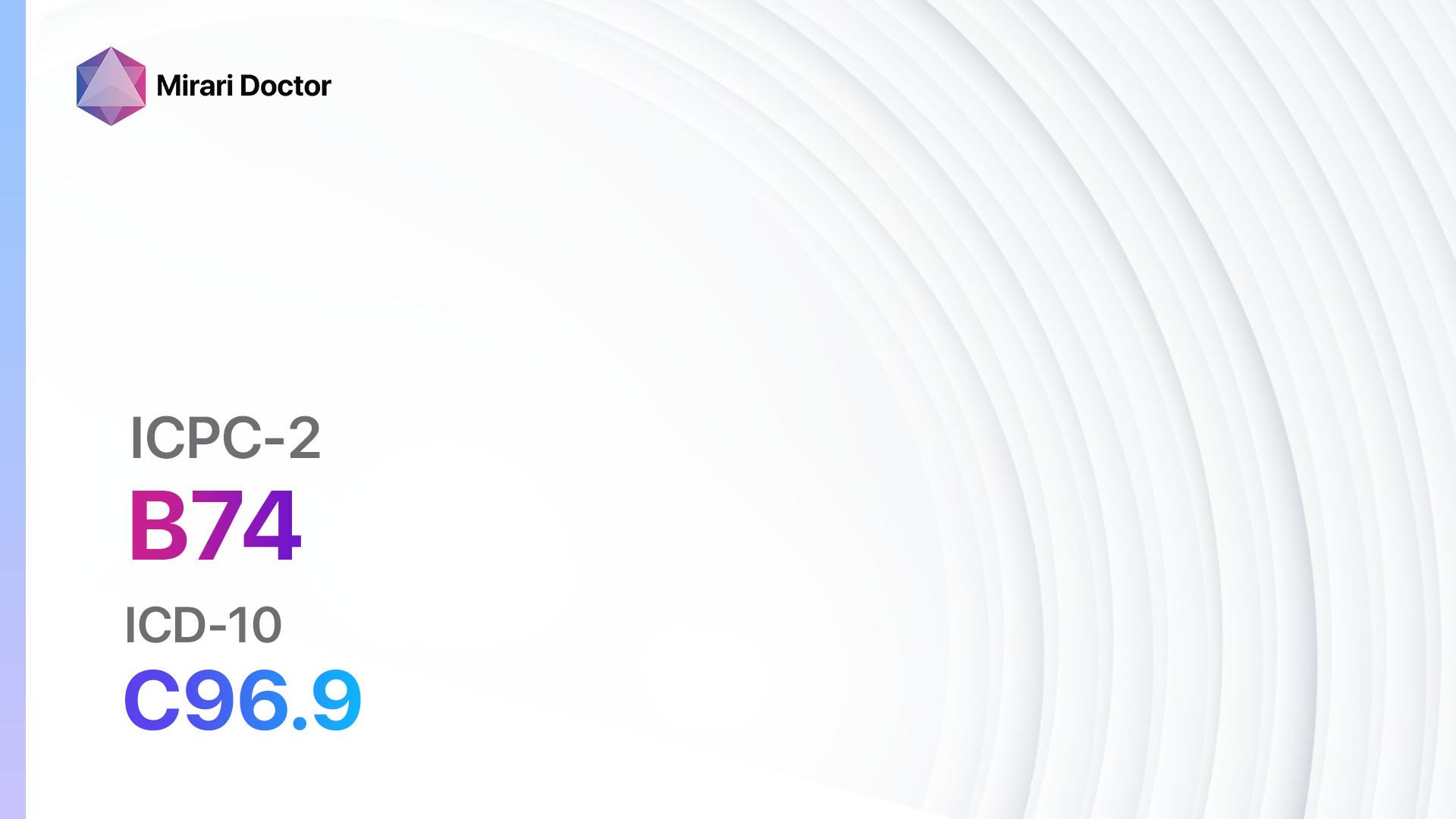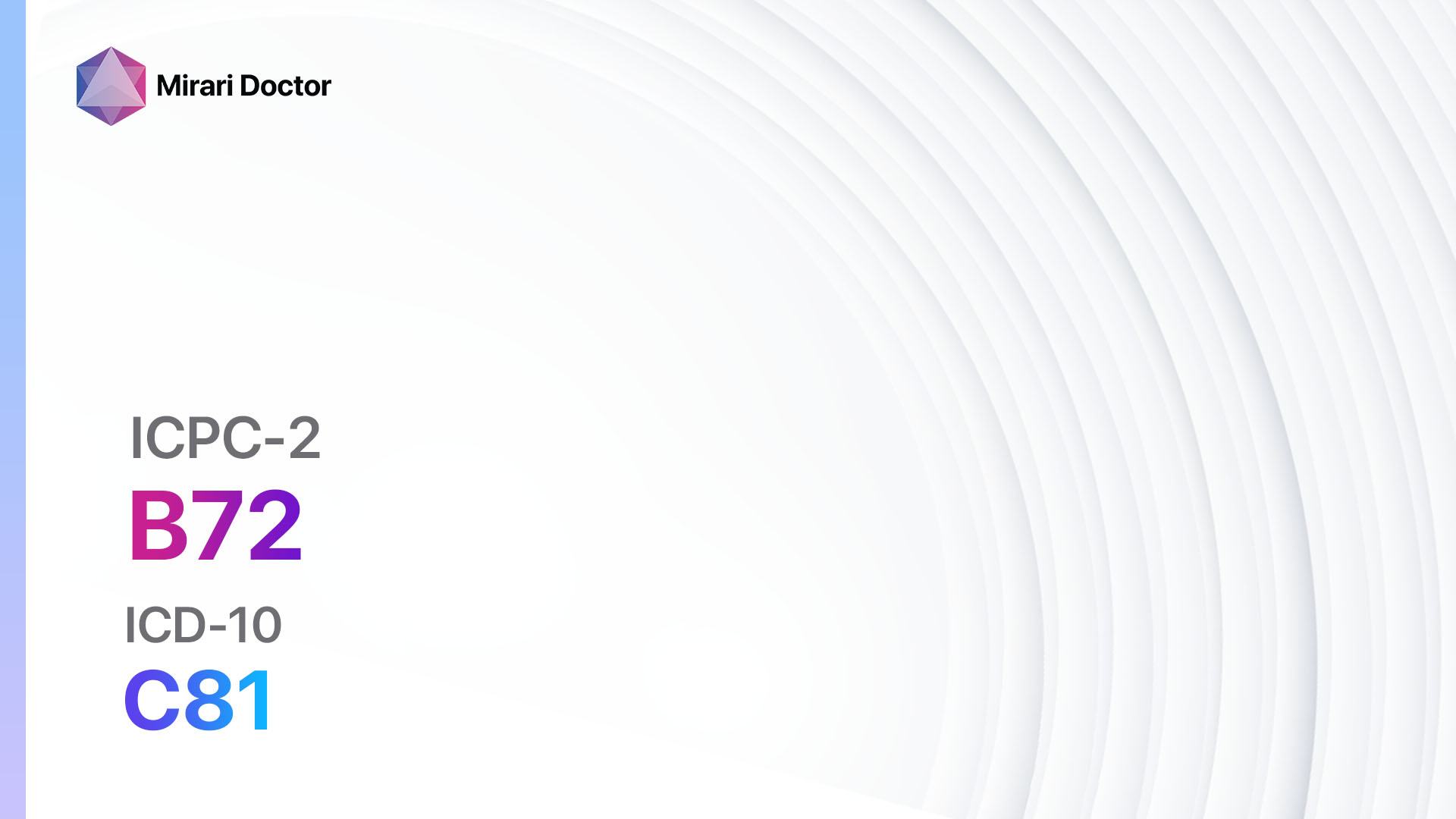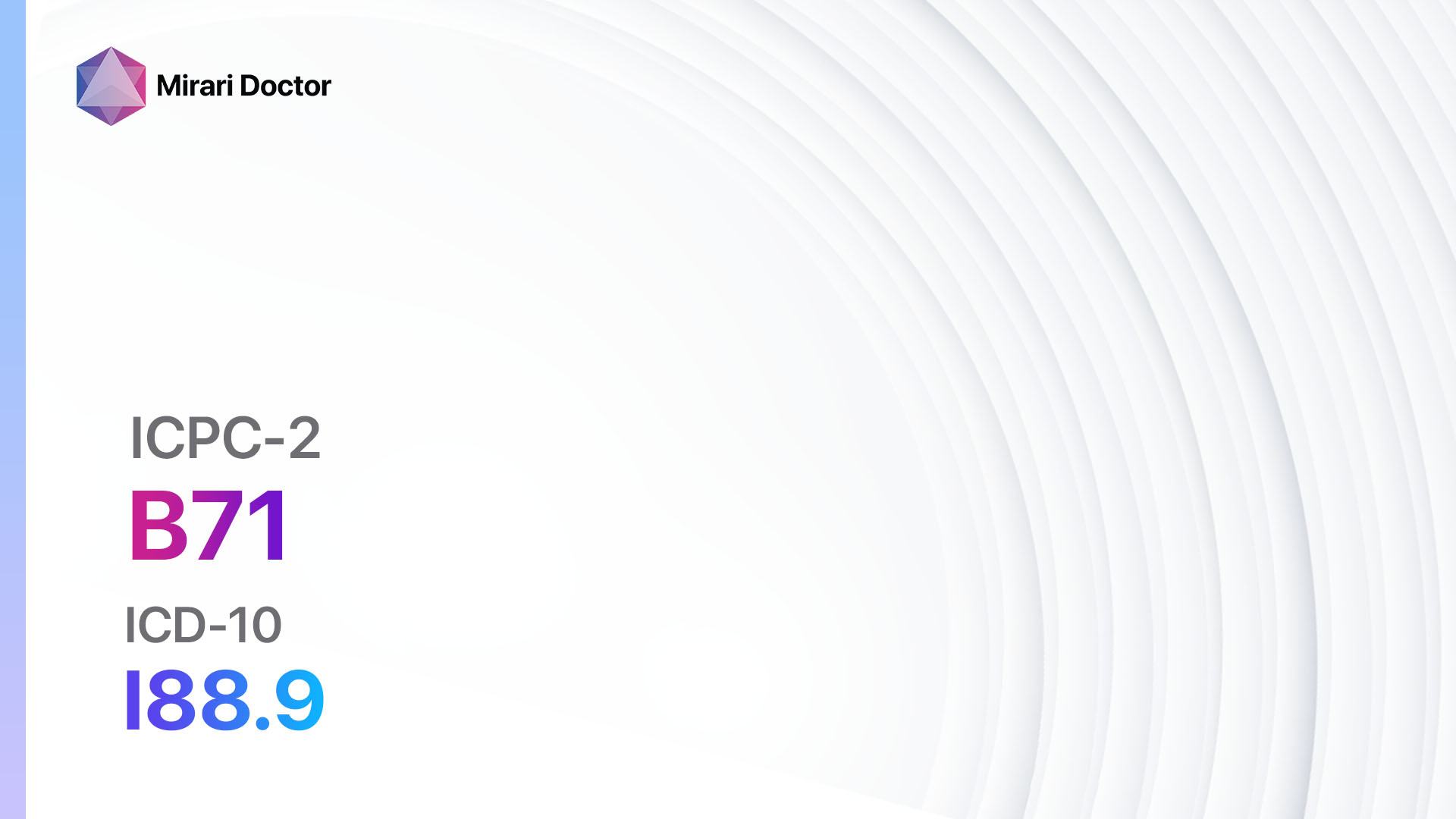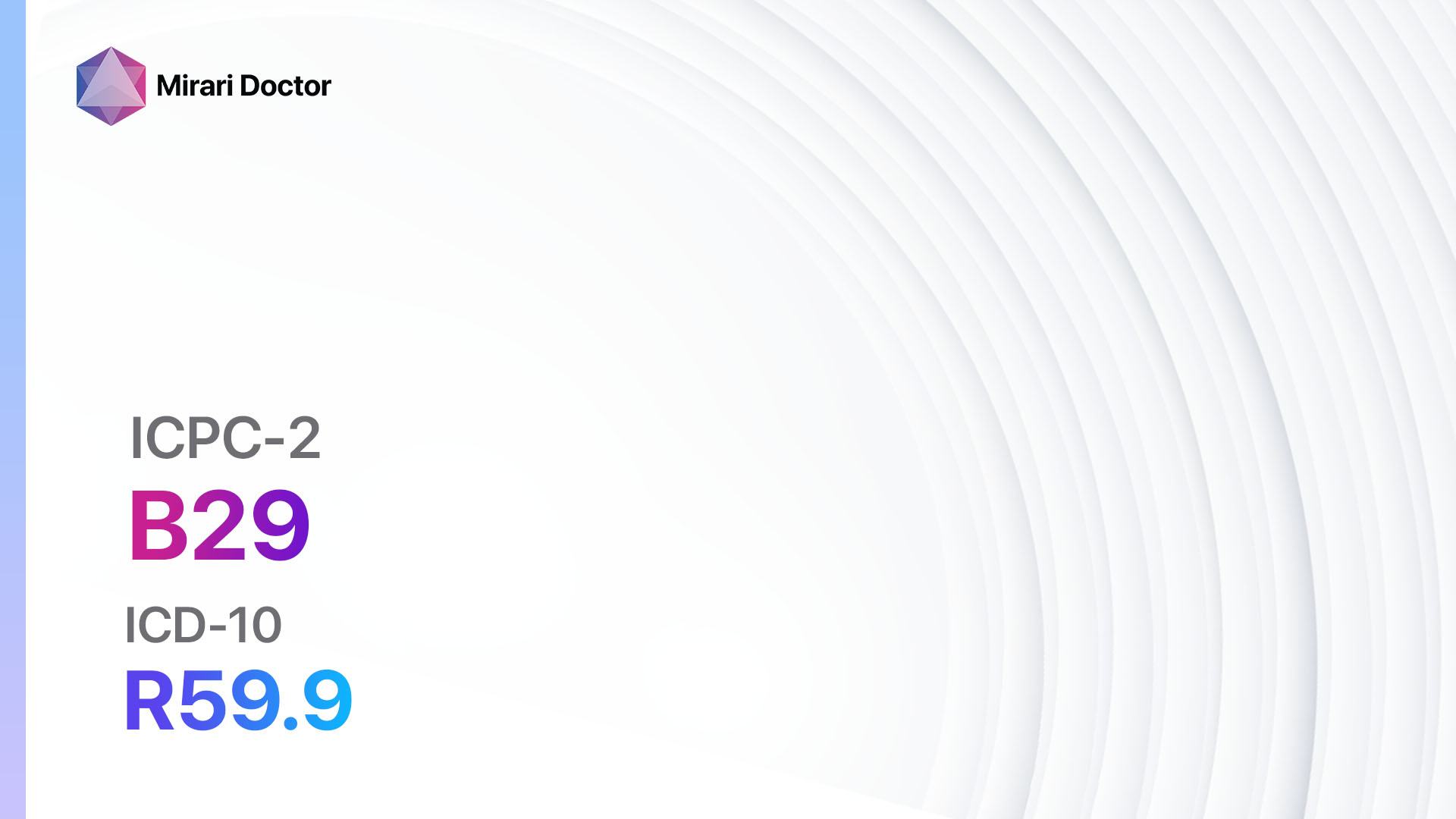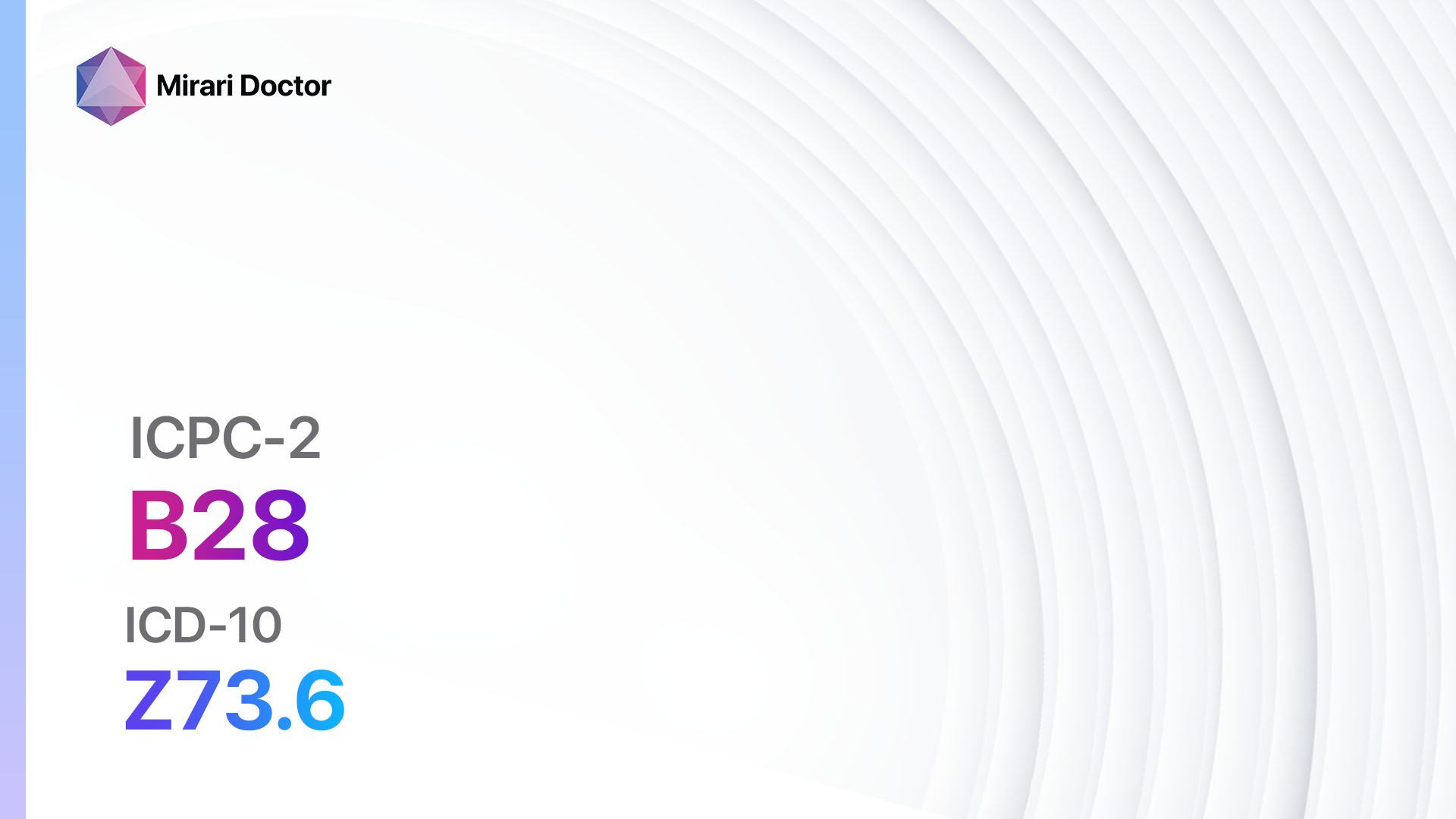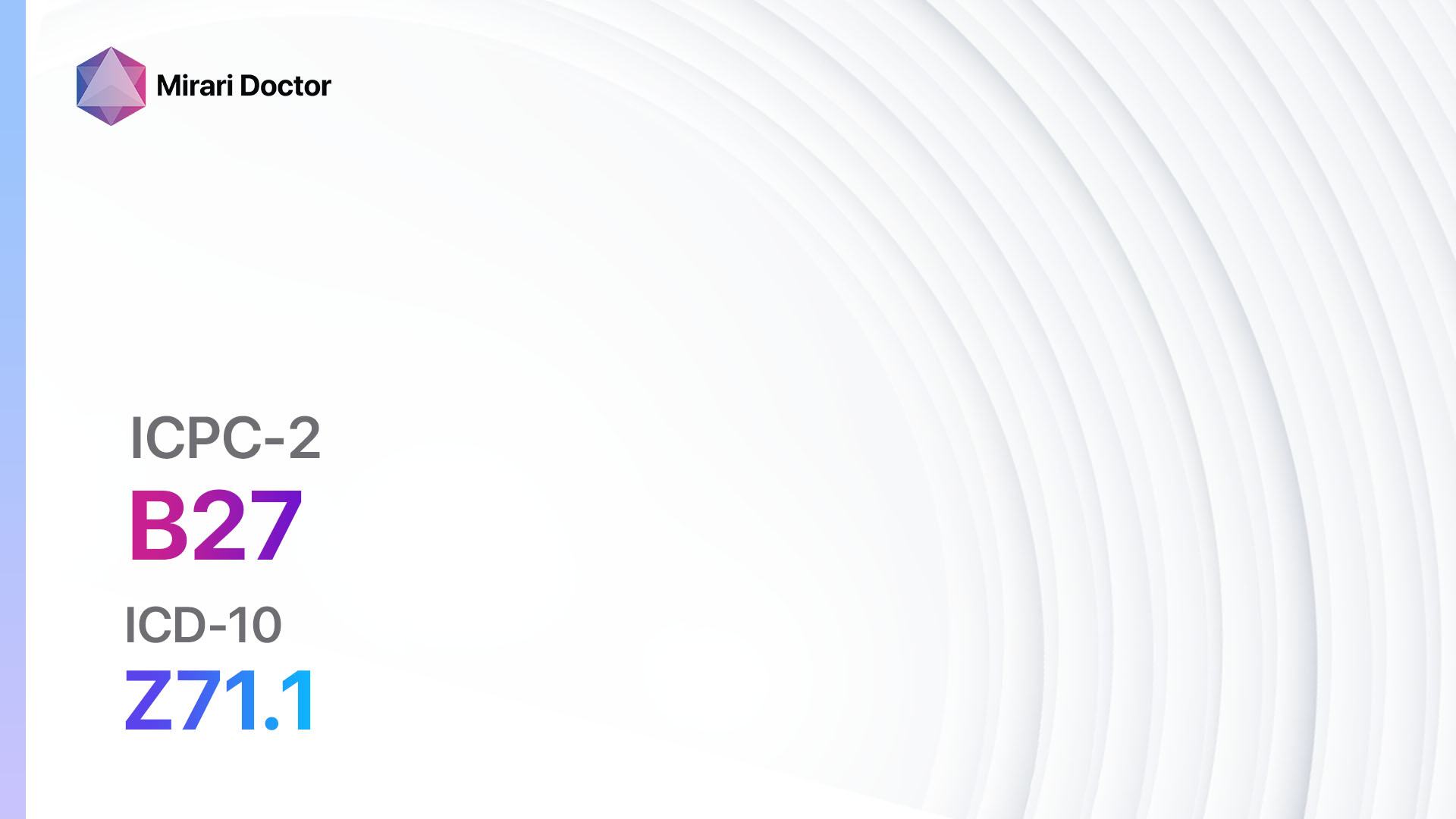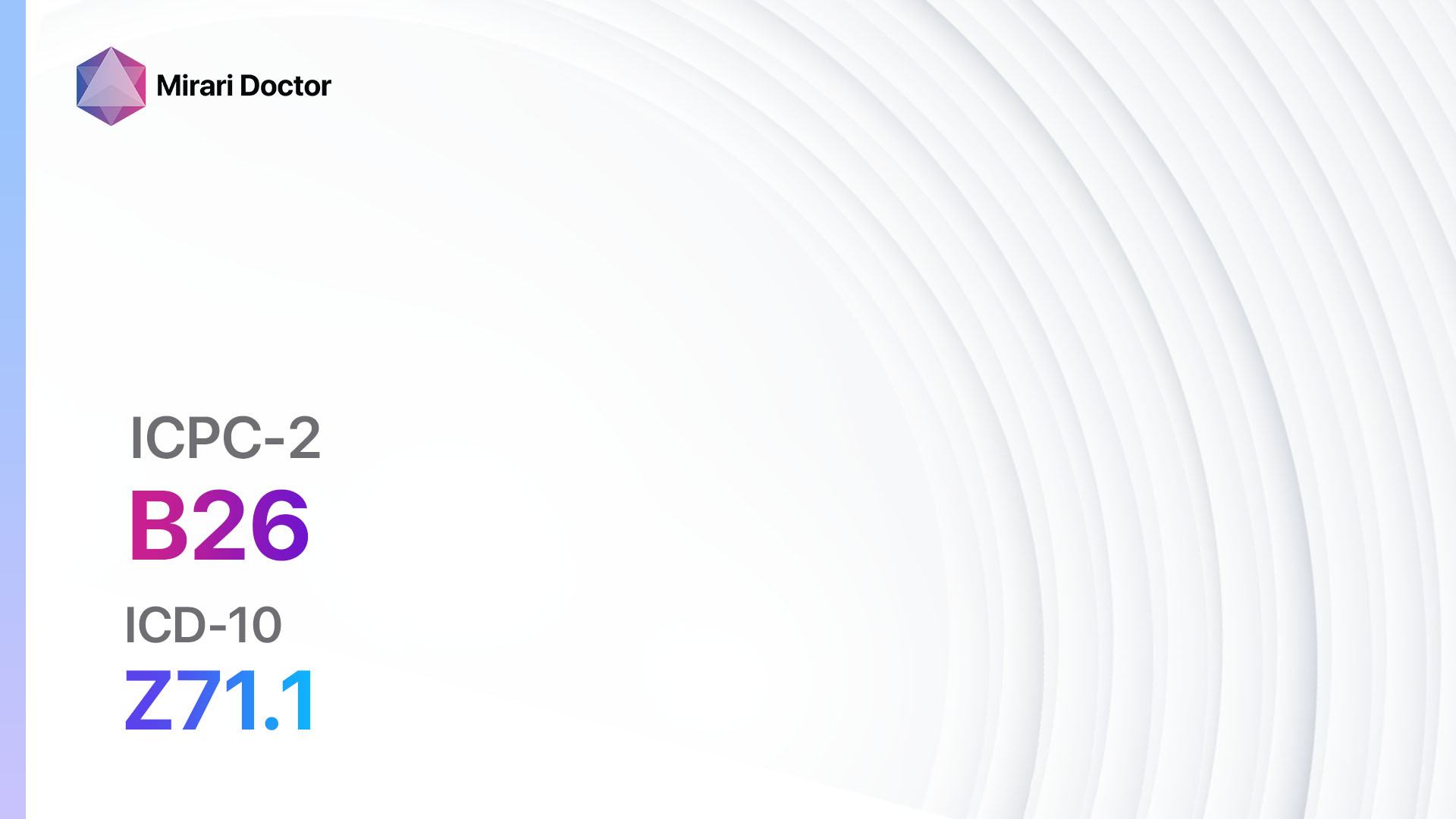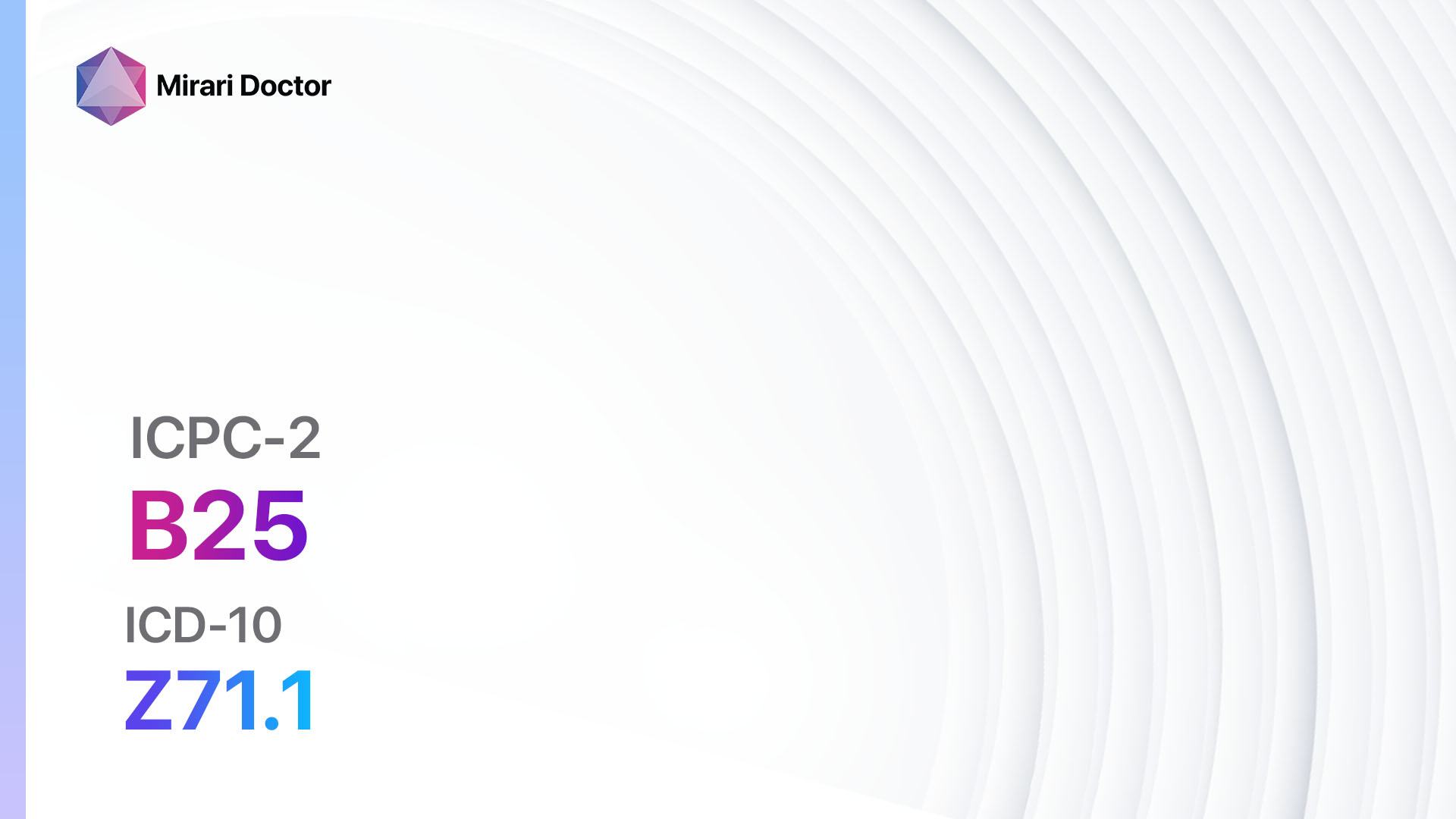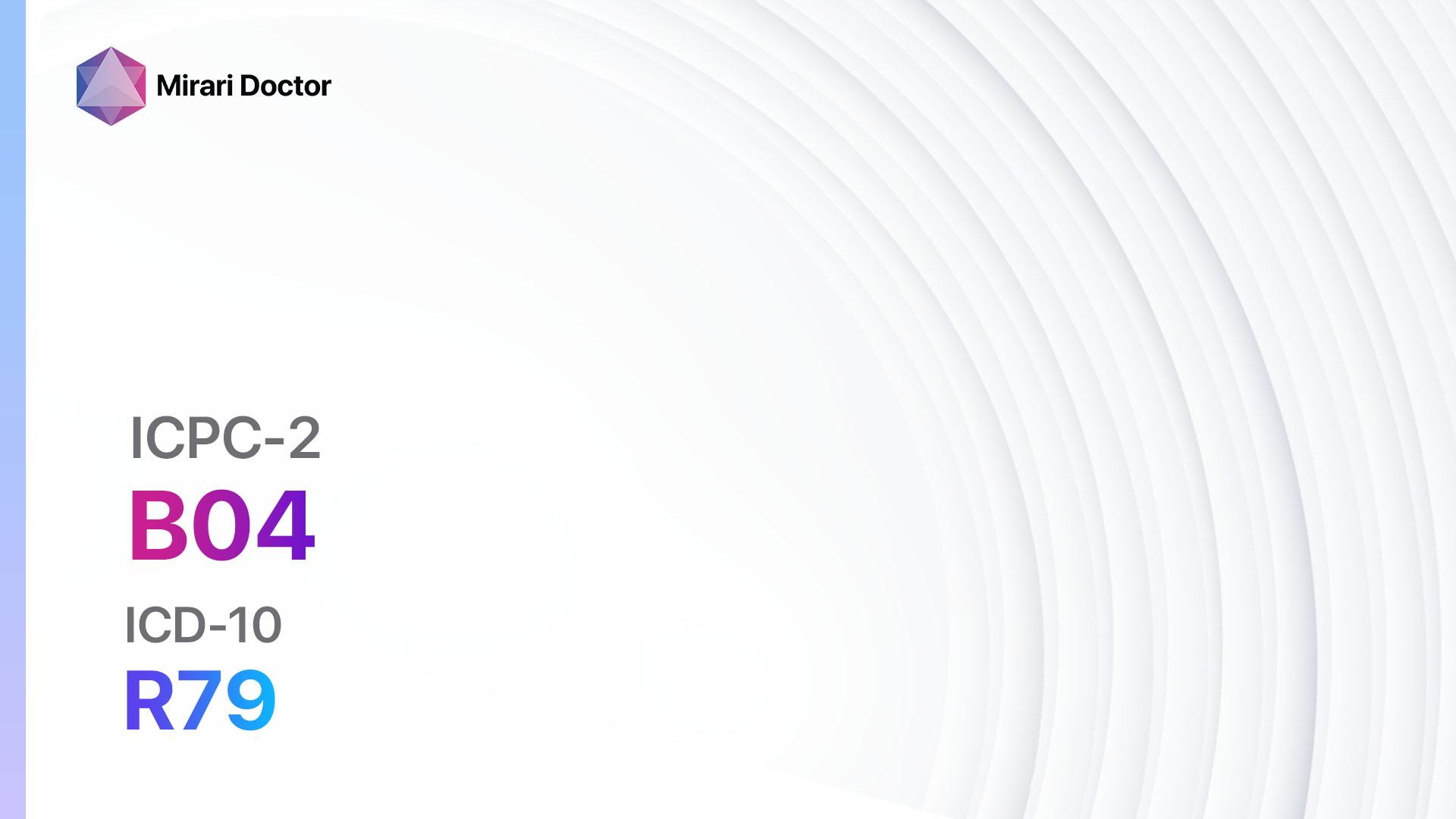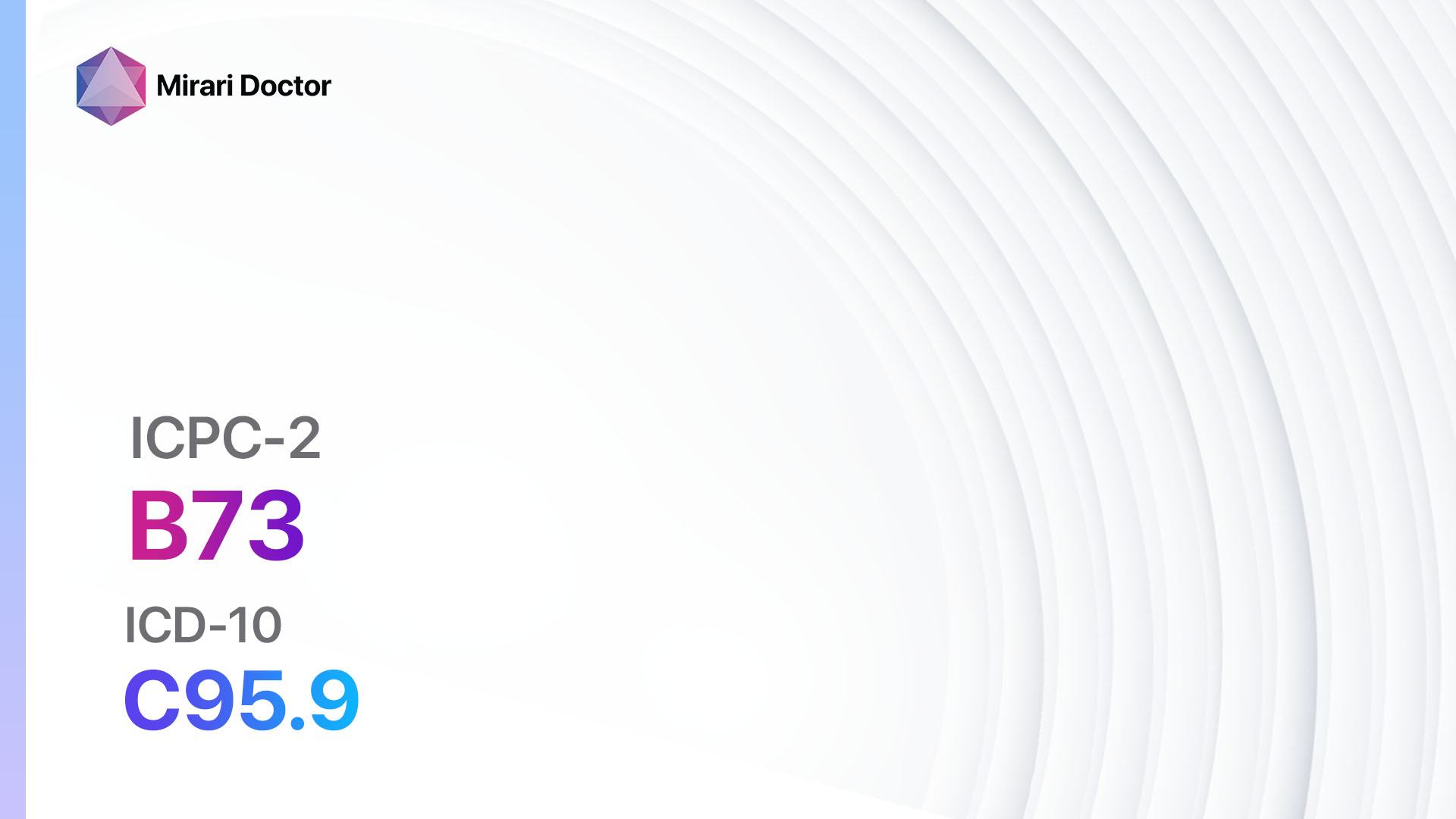
Introduction
Leukemia is a type of cancer that affects the blood and bone marrow. It is characterized by the abnormal production of white blood cells, which are responsible for fighting infections[1]. Leukemia can be acute or chronic and can affect people of all ages[2]. The aim of this guide is to provide a comprehensive overview of the symptoms, causes, diagnostic steps, possible interventions, and lifestyle interventions for leukemia.
Codes
Symptoms
- Fatigue: Feeling tired and weak
- Pale skin: Due to a decrease in red blood cells
- Frequent infections: Due to a decrease in normal white blood cells
- Easy bruising or bleeding: Due to a decrease in platelets
- Bone pain or tenderness: Caused by the spread of leukemia cells to the bone marrow
- Swollen lymph nodes: Enlarged lymph nodes in the neck, armpits, or groin
- Weight loss: Unexplained weight loss
- Night sweats: Excessive sweating during sleep[5]
Causes
- Genetic mutations: Changes in the DNA of blood cells can lead to the development of leukemia
- Environmental factors: Exposure to certain chemicals, such as benzene, can increase the risk of developing leukemia
- Radiation exposure: High levels of radiation, such as from atomic bomb explosions or radiation therapy, can increase the risk of leukemia[6]
Diagnostic Steps
Medical History
- Gather information about the patient’s symptoms, medical conditions, and any risk factors for leukemia
- Ask about family history of leukemia or other cancers
- Inquire about exposure to radiation or chemicals
Physical Examination
- Check for enlarged lymph nodes in the neck, armpits, or groin
- Look for signs of anemia, such as pale skin or fatigue
- Examine the abdomen for an enlarged spleen or liver
Laboratory Tests
- Complete blood count (CBC): Measures the number and types of blood cells
- Peripheral blood smear: Examines the appearance of blood cells under a microscope
- Bone marrow biopsy: Collects a sample of bone marrow for examination
- Cytogenetic analysis: Tests for specific genetic abnormalities in leukemia cells
- Flow cytometry: Analyzes the proteins on the surface of leukemia cells[7]
Diagnostic Imaging
- Chest X-ray: Checks for enlarged lymph nodes or abnormalities in the lungs
- CT scan: Provides detailed images of the chest, abdomen, and pelvis
- MRI: Uses magnetic fields and radio waves to create detailed images of the body
- PET scan: Detects areas of increased metabolic activity, which can indicate the presence of leukemia cells[8]
Other Tests
- Lumbar puncture: Collects cerebrospinal fluid to check for leukemia cells in the central nervous system
- Genetic testing: Identifies specific genetic mutations associated with leukemia
- Flow cytometry: Analyzes the proteins on the surface of leukemia cells to determine the subtype[9]
Follow-up and Patient Education
- Schedule regular follow-up appointments to monitor the response to treatment and manage any side effects
- Educate the patient about the importance of adherence to treatment and lifestyle modifications
- Provide resources for support groups and counseling services[10]
Possible Interventions
Traditional Interventions
Medications:
Top 5 drugs for Leukemia:
- Chemotherapy (e.g., Methotrexate, Vincristine, Daunorubicin):
- Cost: Varies depending on the specific drug and treatment regimen.
- Contraindications: Pregnancy, severe liver or kidney disease.
- Side effects: Nausea, hair loss, increased risk of infection.
- Severe side effects: Bone marrow suppression, organ damage.
- Drug interactions: Many potential drug interactions, including other chemotherapy drugs.
- Warning: Regular blood tests required to monitor for side effects.
- Targeted therapy (e.g., Imatinib, Dasatinib, Nilotinib):
- Cost: Varies depending on the specific drug and treatment regimen.
- Contraindications: Pregnancy, severe liver or kidney disease.
- Side effects: Nausea, diarrhea, rash.
- Severe side effects: Heart problems, liver toxicity.
- Drug interactions: Many potential drug interactions, including other targeted therapy drugs.
- Warning: Regular blood tests required to monitor for side effects.
- Immunotherapy (e.g., Rituximab, Alemtuzumab):
- Cost: Varies depending on the specific drug and treatment regimen.
- Contraindications: Severe infections, severe liver or kidney disease.
- Side effects: Infusion reactions, flu-like symptoms.
- Severe side effects: Severe infections, heart problems.
- Drug interactions: Many potential drug interactions, including other immunosuppressive drugs.
- Warning: Regular blood tests required to monitor for side effects.
- Stem cell transplant (e.g., Autologous, Allogeneic):
- Cost: Varies depending on the specific transplant center and treatment regimen.
- Contraindications: Severe infections, severe heart or lung disease.
- Side effects: Graft-versus-host disease, organ damage.
- Severe side effects: Graft failure, severe infections.
- Drug interactions: Many potential drug interactions, including immunosuppressive drugs.
- Warning: Requires a suitable donor and careful monitoring for complications.
- Radiation therapy (e.g., External beam radiation, Internal radiation):
- Cost: Varies depending on the specific treatment center and treatment regimen.
- Contraindications: Pregnancy, severe heart or lung disease.
- Side effects: Fatigue, skin changes, nausea.
- Severe side effects: Organ damage, secondary cancers.
- Drug interactions: None.
- Warning: Requires careful planning and monitoring to minimize side effects.
Alternative Drugs :
- Hydroxyurea: Used to reduce the number of white blood cells in chronic myeloid leukemia.
- Arsenic trioxide: Used to treat acute promyelocytic leukemia.
- Bortezomib: Used to treat certain types of leukemia, such as mantle cell lymphoma.
Surgical Procedures:
- Stem cell transplant: Involves replacing damaged or destroyed bone marrow with healthy stem cells. Cost: Varies depending on the specific transplant center and treatment regimen.
- Splenectomy: Surgical removal of the spleen, which may be necessary in some cases of leukemia. Cost: Varies depending on the specific hospital and surgeon.
Alternative Interventions
- Acupuncture: May help manage chemotherapy-induced nausea and improve overall well-being. Cost: $60-$120 per session.
- Massage therapy: Can help reduce stress, improve circulation, and alleviate pain. Cost: $60-$120 per session.
- Mind-body techniques: Practices such as meditation, yoga, and tai chi can help reduce stress and improve quality of life. Cost: Varies depending on the specific practice and location.
- Herbal supplements: Some herbs, such as turmeric and green tea, may have potential benefits for supporting the immune system. Cost: Varies depending on the specific supplement.
Lifestyle Interventions
- Healthy diet: Eating a balanced diet rich in fruits, vegetables, whole grains, and lean proteins can support overall health and immune function. Cost: Varies depending on individual food choices and preferences.
- Regular exercise: Engaging in regular physical activity can help improve energy levels, reduce fatigue, and support overall well-being. Cost: Varies depending on individual preferences and access to exercise facilities.
- Stress management: Techniques such as deep breathing, meditation, or mindfulness can help reduce stress and support immune function. Cost: Varies depending on the specific practice.
- Adequate sleep: Getting enough sleep is essential for immune function and overall health. Cost: Varies depending on individual sleep habits and preferences.
It is important to note that the cost ranges provided are approximate and may vary depending on the location and availability of the interventions. It is recommended to consult with a healthcare professional for personalized treatment recommendations and cost estimates.
Mirari Cold Plasma Alternative Intervention
Understanding Mirari Cold Plasma
- Safe and Non-Invasive Treatment: Mirari Cold Plasma is a safe and non-invasive treatment option for various skin conditions. It does not require incisions, minimizing the risk of scarring, bleeding, or tissue damage.
- Efficient Extraction of Foreign Bodies: Mirari Cold Plasma facilitates the removal of foreign bodies from the skin by degrading and dissociating organic matter, allowing easier access and extraction.
- Pain Reduction and Comfort: Mirari Cold Plasma has a local analgesic effect, providing pain relief during the treatment, making it more comfortable for the patient.
- Reduced Risk of Infection: Mirari Cold Plasma has antimicrobial properties, effectively killing bacteria and reducing the risk of infection.
- Accelerated Healing and Minimal Scarring: Mirari Cold Plasma stimulates wound healing and tissue regeneration, reducing healing time and minimizing the formation of scars.
Mirari Cold Plasma Prescription
Video instructions for using Mirari Cold Plasma Device – B73 Leukemia (ICD-10:C95.9)
| Mild | Moderate | Severe |
| Mode setting: 1 (Infection) Location: 1 (Sacrum) Morning: 15 minutes, Evening: 15 minutes |
Mode setting: 1 (Infection) Location: 1 (Sacrum) Morning: 30 minutes, Lunch: 30 minutes, Evening: 30 minutes |
Mode setting: 1 (Infection) Location: 1 (Sacrum) Morning: 30 minutes, Lunch: 30 minutes, Evening: 30 minutes |
| Mode setting: 2 (Wound Healing) Location: 1 (Sacrum) Morning: 15 minutes, Evening: 15 minutes |
Mode setting: 2 (Wound Healing) Location: 1 (Sacrum) Morning: 30 minutes, Lunch: 30 minutes, Evening: 30 minutes |
Mode setting: 2 (Wound Healing) Location: 1 (Sacrum) Morning: 30 minutes, Lunch: 30 minutes, Evening: 30 minutes |
| Mode setting: 3 (Antiviral Therapy) Location: 0 (Localized) Morning: 15 minutes, Evening: 15 minutes |
Mode setting: 3 (Antiviral Therapy) Location: 0 (Localized) Morning: 30 minutes, Lunch: 30 minutes, Evening: 30 minutes |
Mode setting: 3 (Antiviral Therapy) Location: 0 (Localized) Morning: 30 minutes, Lunch: 30 minutes, Evening: 30 minutes |
| Mode setting: 7 (Immunotherapy) Location: 1 (Sacrum) Morning: 15 minutes, Evening: 15 minutes |
Mode setting: 7 (Immunotherapy) Location: 1 (Sacrum) Morning: 30 minutes, Lunch: 30 minutes, Evening: 30 minutes |
Mode setting: 7 (Immunotherapy) Location: 1 (Sacrum) Morning: 30 minutes, Lunch: 30 minutes, Evening: 30 minutes |
| Total Morning: 60 minutes approx. $10 USD, Evening: 60 minutes approx. $10 USD |
Total Morning: 120 minutes approx. $20 USD, Lunch: 120 minutes approx. $20 USD, Evening: 120 minutes approx. $20 USD, |
Total Morning: 120 minutes approx. $20 USD, Lunch: 120 minutes approx. $20 USD, Evening: 120 minutes approx. $20 USD, |
| Usual treatment for 7-60 days approx. $140 USD – $1200 USD | Usual treatment for 6-8 weeks approx. $2,520 USD – $3,360 USD |
Usual treatment for 3-6 months approx. $5,400 USD – $10,800 USD
|
 |
|
Use the Mirari Cold Plasma device to treat Leukemia effectively.
WARNING: MIRARI COLD PLASMA IS DESIGNED FOR THE HUMAN BODY WITHOUT ANY ARTIFICIAL OR THIRD PARTY PRODUCTS. USE OF OTHER PRODUCTS IN COMBINATION WITH MIRARI COLD PLASMA MAY CAUSE UNPREDICTABLE EFFECTS, HARM OR INJURY. PLEASE CONSULT A MEDICAL PROFESSIONAL BEFORE COMBINING ANY OTHER PRODUCTS WITH USE OF MIRARI.
Step 1: Cleanse the Skin
- Start by cleaning the affected area of the skin with a gentle cleanser or mild soap and water. Gently pat the area dry with a clean towel.
Step 2: Prepare the Mirari Cold Plasma device
- Ensure that the Mirari Cold Plasma device is fully charged or has fresh batteries as per the manufacturer’s instructions. Make sure the device is clean and in good working condition.
- Switch on the Mirari device using the power button or by following the specific instructions provided with the device.
- Some Mirari devices may have adjustable settings for intensity or treatment duration. Follow the manufacturer’s instructions to select the appropriate settings based on your needs and the recommended guidelines.
Step 3: Apply the Device
- Place the Mirari device in direct contact with the affected area of the skin. Gently glide or hold the device over the skin surface, ensuring even coverage of the area experiencing.
- Slowly move the Mirari device in a circular motion or follow a specific pattern as indicated in the user manual. This helps ensure thorough treatment coverage.
Step 4: Monitor and Assess:
- Keep track of your progress and evaluate the effectiveness of the Mirari device in managing your Leukemia. If you have any concerns or notice any adverse reactions, consult with your health care professional.
Note
This guide is for informational purposes only and should not replace the advice of a medical professional. Always consult with your healthcare provider or a qualified medical professional for personal advice, diagnosis, or treatment. Do not solely rely on the information presented here for decisions about your health. Use of this information is at your own risk. The authors of this guide, nor any associated entities or platforms, are not responsible for any potential adverse effects or outcomes based on the content.
Mirari Cold Plasma System Disclaimer
- Purpose: The Mirari Cold Plasma System is a Class 2 medical device designed for use by trained healthcare professionals. It is registered for use in Thailand and Vietnam. It is not intended for use outside of these locations.
- Informational Use: The content and information provided with the device are for educational and informational purposes only. They are not a substitute for professional medical advice or care.
- Variable Outcomes: While the device is approved for specific uses, individual outcomes can differ. We do not assert or guarantee specific medical outcomes.
- Consultation: Prior to utilizing the device or making decisions based on its content, it is essential to consult with a Certified Mirari Tele-Therapist and your medical healthcare provider regarding specific protocols.
- Liability: By using this device, users are acknowledging and accepting all potential risks. Neither the manufacturer nor the distributor will be held accountable for any adverse reactions, injuries, or damages stemming from its use.
- Geographical Availability: This device has received approval for designated purposes by the Thai and Vietnam FDA. As of now, outside of Thailand and Vietnam, the Mirari Cold Plasma System is not available for purchase or use.
References
- Jagannathan-Bogdan, M., & Zon, L. I. (2013). Hematopoiesis. Development, 140(12), 2463-2467. https://doi.org/10.1242/dev.083147
- Saultz, J. N., & Garzon, R. (2016). Acute Myeloid Leukemia: A Concise Review. Journal of Clinical Medicine, 5(3), 33. https://doi.org/10.3390/jcm5030033
- WONCA International Classification Committee. (2005). ICPC-2-R: International Classification of Primary Care (2nd ed., revised). Oxford University Press.
- World Health Organization. (2019). International Statistical Classification of Diseases and Related Health Problems (11th ed.). https://icd.who.int/
- Terwilliger, T., & Abdul-Hay, M. (2017). Acute lymphoblastic leukemia: a comprehensive review and 2017 update. Blood Cancer Journal, 7(6), e577. https://doi.org/10.1038/bcj.2017.53
- Buffler, P. A., Kwan, M. L., Reynolds, P., & Urayama, K. Y. (2005). Environmental and genetic risk factors for childhood leukemia: appraising the evidence. Cancer Investigation, 23(1), 60-75. https://doi.org/10.1081/cnv-46402
- Kadia, T. M., Jain, P., Ravandi, F., Garcia-Manero, G., Andreef, M., Takahashi, K., Borthakur, G., Jabbour, E., Konopleva, M., Daver, N. G., Dinardo, C., Pierce, S., Kanagal-Shamanna, R., Patel, K., Estrov, Z., Cortes, J., & Kantarjian, H. M. (2016). TP53 mutations in newly diagnosed acute myeloid leukemia: Clinicomolecular characteristics, response to therapy, and outcomes. Cancer, 122(22), 3484-3491. https://doi.org/10.1002/cncr.30203
- Barrington, S. F., Mikhaeel, N. G., Kostakoglu, L., Meignan, M., Hutchings, M., Müeller, S. P., Schwartz, L. H., Zucca, E., Fisher, R. I., Trotman, J., Hoekstra, O. S., Hicks, R. J., O’Doherty, M. J., Hustinx, R., Biggi, A., & Cheson, B. D. (2014). Role of imaging in the staging and response assessment of lymphoma: consensus of the International Conference on Malignant Lymphomas Imaging Working Group. Journal of Clinical Oncology, 32(27), 3048-3058. https://doi.org/10.1200/JCO.2013.53.5229
- Döhner, H., Estey, E., Grimwade, D., Amadori, S., Appelbaum, F. R., Büchner, T., Dombret, H., Ebert, B. L., Fenaux, P., Larson, R. A., Levine, R. L., Lo-Coco, F., Naoe, T., Niederwieser, D., Ossenkoppele, G. J., Sanz, M., Sierra, J., Tallman, M. S., Tien, H. F., … Bloomfield, C. D. (2017). Diagnosis and management of AML in adults: 2017 ELN recommendations from an international expert panel. Blood, 129(4), 424-447. https://doi.org/10.1182/blood-2016-08-733196
- Howell, D., Molloy, S., Wilkinson, K., Green, E., Orchard, K., Wang, K., Liberty, J., Hutchinson, T., Sivell, S., Elwyn, G., Bergenmar, M., Henriksson, A., Maher, E. J., Velikova, G., Stark, D., Selman, L., & Patmore, R. (2015). Patient-reported outcomes in routine cancer clinical practice: a scoping review of use, impact on health outcomes, and implementation factors. Annals of Oncology, 26(9), 1846-1858. https://doi.org/10.1093/annonc/mdv181
Related articles
Made in USA


